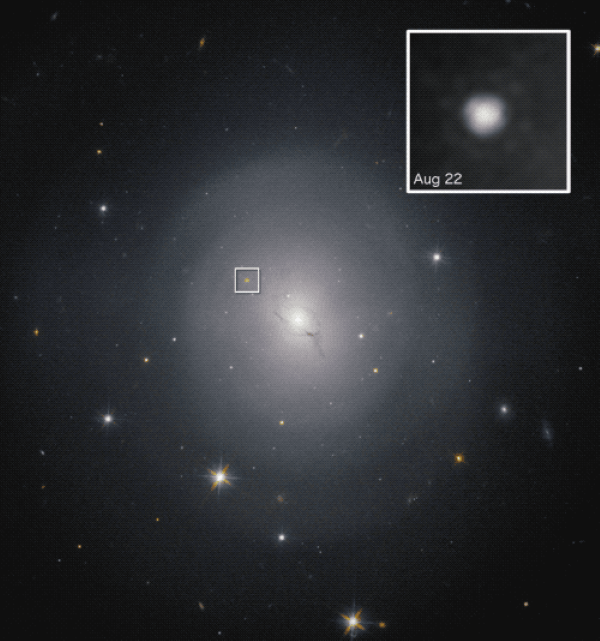130 million years ago, two neutron stars spiraled into one another resulting in an enormous explosion that sent ripples barrelling through the universe. These ripples finally came ripping through the Earth on August 17, 2017 and were detected by LIGO/Virgo as a gravitational wave gently squeezing our planet. LIGO/Virgo is a collaboration between three research stations each housing a laser interferometer. LIGO detectors are located in Hanford, WA and Livingston, LA while Virgo is located in Cascina, Italy.
Neutron stars are the mass of the sun, packed so densely and tightly that they are the size of a city. Their collision sent fireworks through the universe. LIGO/Virgo announced on October 16 that their gravitational wave interferometers witnessed the final 100 seconds of the inspiral and collision of these stars.
The observation of the collision confirms Einstein’s theories which predicted gravitational waves as part of general relativity. However, the details of this collision tells us much more about astrophysics. The chirp mass, or the amount of mass that went into the collision, was deduced from the observed signal. They found the chirp mass to be 2.74 suns, with each neutron star being between 1.17 and 1.6 suns. The neutron stars created a new body after they smashed into one another, but scientists do not know what was created. Fascinatingly, the result looks to be either the largest neutron star or lightest black hole astronomers have ever observed!
The addition of the Virgo detector to the LIGO interferometer pair allows better isolation of where in the sky the gravitational waves originated. In this instance, the event was localized to a region of sky about the area of 150 moons. While that may seem large, it’s the most precisely localized gravitational wave signal yet. The precision allowed scientists to also detect the resulting light from the collision. The telescopes Fermi-GRB and INTEGRAL detected faint gamma-ray bursts. Gamma-ray bursts are puffs of high energy light which last only a couple seconds. These telescopes identifying the gamma-ray burst after the gravitational wave shows that these gamma-ray bursts can be the result of neutron star mergers – a theory that was only proven by this discovery.
Lastly, another telescope, One-Meter Two-Hemisphere team identified the neutron star merger resulted in a kilonova. A kilonova releases 1000x the energy of a regular nova. Our sun is made of hydrogen and helium, the two lightest elements. Stars the size of 15 suns can create elements as heavy as iron. Nonetheless, even these large stars still cannot create the heavy elements we find on Earth, such as gold, silver, and uranium. These come from a process was only theorized to exist, called the r-process that occurs in kilonovae. The neutron star merger is the first observation of a kilonovae as well!
All our gravitational wave detections have been in the last 2 years, and science has learned so much from these observations. Three amazing discoveries were made from this observation alone. An exciting future lays ahead for astrophysics.


